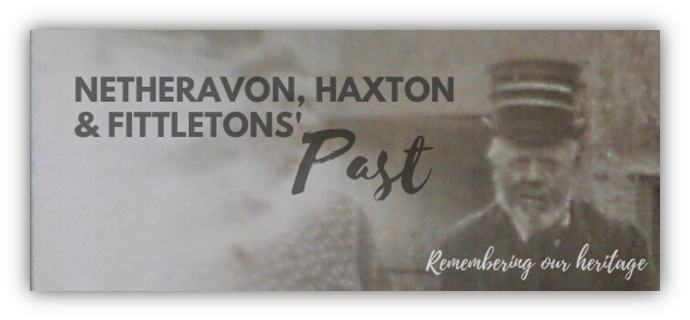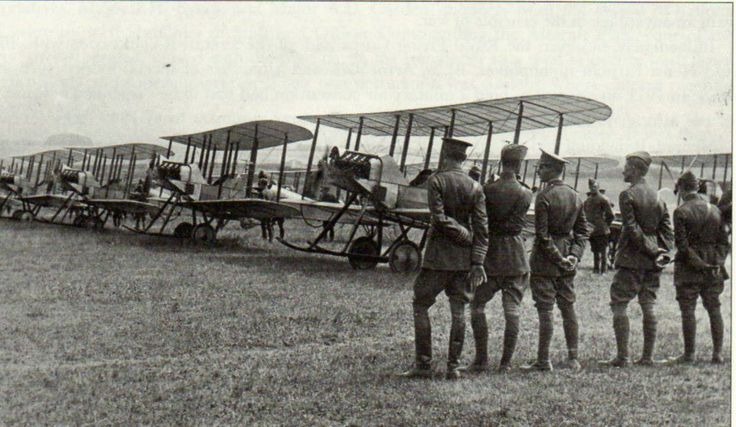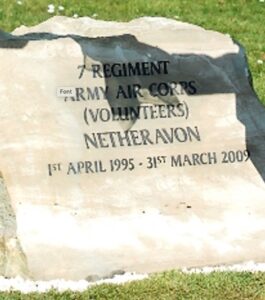History of Netheravon Airfield (As shown at the Army Aviation Museum, Middle Wallop)
Netheravon Airfield in Wiltshire is a key site in the history of British military aviation. It was the first operational squadron station selected for the Military Wing of the Royal Flying Corp and is now one of the oldest operational military airfields in the country, having been in continuous use since 1913.
In 1911 the Royal Engineers formed an Air Battalion for the military use of kites, balloons, airships and aeroplanes. It was decided that No 2 Aeroplane Company of the Battalion should be moved away from its base in Farnborough and closer to Salisbury Plain, the armys main training area, a flying ground was used at Larkhill in Wiltshire.
In good weather the soldiers at Larkhill were accommodated in tents pitched alongside the airfield. However, this was a temporary measure and they were soon moved to nearby Bulford Camp. From here they would travel to the airfield on a daily basis. Officers were quartered at the Bustard Inn, a few miles West of Larkhill. Despite these arrangements, it became clear that a new airfield with its own accommodation was needed.
With the formation of The Royal Flying Corps (RFC) in 1912, the Company became No3 Squadron RFC.
The area above Netheravon village was selected as the site for a new airfield because it was a clear, open area which was windy on most days. Also, there was a military camp close by which could be used during the construction period. Specifications were drawn up for five types of building for the airfield – aeroplane sheds, vehicle sheds, workshops, petrol stores and latrines. They were to be soundly but cheaply built.
Work started on the aeroplane sheds during the winter of 1912-13. Fifteen sheds were required, arranged in six blocks of two and one block of three. They had a clear internal space of 65 feet wide by 70 feet deep by 15 feet high (approximately 20 metres by 21 metres by 4.5 meters) with an entrance spanning the full width of the hanger. By the summer of 1913, they were completed and No.3 Squadron RFC moved in on 16th June, followed two days later by No.4 Squadron RFC.
One of those who moved to Netheravon with No.3 Squadron was Air Mechanic J T B McCudden who within five years, was to become Major J T B McCudden VC DSO MC MM. He wrote “…No.3 Squadron moved to a new aerodrome at Netheravon a few miles distant. We were under canvas here, just behind the sheds, and everyone spent a most pleasant time. Even now, flying rarely took place during the day owing to “Bumps” in the air”.
To keep costs down, the airfield accommodation blocks were timber framed buildings made of asbestos panels. They were named Choulston Barracks after a nearby farm. McCudden recorded that his Squadron moved into the new barracks in October and “…we were now very comfortable. We had a good mess, also a recreation room and a billiard table, and we were all very happy’.
The RFC Concentration
In June 1914 all five aeroplane Squadrons of the RFC (Nos 2 – 6) gathered at Netheravon for a practice camp to test the training of personnel on the ground and in the air, and to discuss and examine the problems of military aeronautics in war. The programme of this “Concentration” included tactical exercises. Reconnaissance in search of ground troops, aerial photography and balloon engagement. Wireless telegraphy was also practiced and Lieutenant D S Lewis and Lieutenant B J James flying in two separate aircraft from Netheravon to Bournemouth, were able to communicate with each other in the air over a distance of ten miles.
The influx of personnel for the concentration was accommodated in bell tents which were erected on the North side of the domestic area of the airfield. McCudden recalled that owing to the fact that several squadrons were congregated at Netheravon there was lively competition in “Stunting”.
The concentration attracted a stream of visitors including the Prime Minister, the Right Honourable Herbert Asquith, Lord Roberts and a large number of military attaches from foreign countries including Germany and Austria. It was well timed, soon after three of the Squadrons had dispersed in July, the First World War broke out.
World War One
On the outbreak of war, security of the airfield increased. Armed guards lived in the sheds with the aircraft and all personnel were issued with live ammunition. On one night in August guards were sent out to scour the countryside surrounding the airfield looking for spies who it was reported, were planning to blow up the aircraft sheds.
On the mobilisation of No.3 Squadron RFC, McCudden records that he prepared a Bleriot by loading up maps and bags, a rack for a rifle and an ammunition sack. He also recalled that everyone had to provide the name of their next of kin and were given a field pay book. In his words “Everyone was very keen to get out there, and important too as most of us were afraid there would be no Germans left as the Belgians were reported to be annihilating the whole German Army near Liege…… It was generally expected that we should all be home by Christimas”.
No.3 and No.4 Squadrons left for France in early August 1914. They were replaced at Netheravon by No.6 Squadron RFC which also soon moved on to France.
In order to meet the increasing demand for pilots, Netheravon was made an annex to the Central Flying School at Upavon to undertake the preliminary training of officers not in possession of aviators’ certificates. However, this did not last long and up until 1916, the station was mostly used as a base where new Squadrons could be formed or existing Squadrons “worked up” (prepared) for active service under the control of No.4 Wing.
Towards the end of 1916, the station once again became part of the Central Flying School. At about this time, a set of “Rules of the Air at Netheravon” was published which stated that “…….only graduated pilots may loop, zoom or indulge in aerobatics and then not under 2000 feet”. Additional “Hints on Flying” advised pilots at Netheravon that. “A good pilot sits in his aeroplane with all his muscles at rest. It is quite unnecessary to hold your controls in a fierce grip. If you get into this habit, you will never make a good flyer. Cultivate a lounging easy, comfortable position in your aeroplane.
In 1917, No.4 Wing was revived, with its Headquarters at Netheravon. It contained three Reserve Squadrons for elementary training, an Aeroplane Repair section and a school of Fitters. On the formation of the Royal Air Force (RAF) on 1st April 1918, the wing was incorporated into the South Wester Area Command and Netheravon became home to an Artillery Co-operation Squadron, one or two temporarily – based Squadrons, a training section and No.8 and No.12 Training Depot Stations (TDS) for the processing of ground personnel. The aircraft operating from the airfield at this time ranged from the Avro 504 to the Handley-Page 0/400 heavy bomber which was being operated by one of the former Royal Naval Air Service Squadrons which were refitted at Netheravon before being returned to France.
The Interwar Years
The Armistice brought a cessation of further training and Netheravon was used for the disbandment of units returning from the Continent. In July 1919, when this was complete, a Netheravon Flying Training School was set up, later retitled No.1 Flying Training School (No.1 FTS) and Netheravon became a centre of training for the Royal Naval pilots. The School remained the major unit on the airfield for several years using Bristol Fighters, D.H.9s, Avro 504s and Sopwith Snipes.
Throughout the interwar years a number of units were based at Netheravon for short periods of time. These included No.s 11, 33, 42 and 99 Squadrons and 409 Flight. No.s 57 and 142 Squadrons RAF, which were bomber units, were also based at the airfield. One of the Squadrons which stayed for the longest time was No.13 Squadron RAF which arrived from Andover in 1929. This was an Army Co-operation unit, equipped with Atlas and later Audax aircraft, which remained at Netheravon for six years.
In 1931, No.1 FTS moved from Netheravon to RAF Leuchars, leaving the airfield occupied by No.13 RAF. The Royal Navy also used the airfield as a shore base for their aircraft when the parent ships were in harbour. In 1935 the station was taken over by 23 Group RAF and once again became a training establishment with the formation of No.6 Flying Training School. The purpose of this School was to introduce pilots with elementary flying skills to military aircraft using the Hawker Hart variants and Avro Tutors. Training included formation flying, low level cross country flying, night flying and air firing. One of the pupils was Pilot Officer Guy Gibson, later Wing Commander Guy Gibson VC of “Dam Busters” fame.
Following the departure of No.6 FTS, No.1 Flying Training School returned to the airfield, now operating as an advanced flying school training Royal Navy Pilots using Hart variants and later, Harvards. The School was renamed No.1 Service Flying Training School and it was in this guise that Netheravon entered the Second World War. Flying training continued at Netheravon until 1942 when the School was disbanded.
World War Two
Apart from No.1 FTS, a wide variety of units occupied Netheravon during the Second World War. Following the success of German Airborne Forces, Prime Minister Winston Churchill ordered the creation of a British equivalent containing both parachute and glider borne elements. At the end of 1941 Netheravon was selected to be the centre for these Airborne Forces. The Glider Exercise Squadron, which was a glider towing unit (later retitled No.296 Squadron RAF) moved to Netheravon from Ringway in Manchester. No.296 Squadron operated Hector and Hart biplanes as towing aircraft for the Hotspur glider but these were soon replaced by Whitley bombers with glider towing gear fitted at the rear turret. No.297 Squadron also operated Whitleys but these were modified with a hole in the bottom of the fuselage for parachutists.
The station was transferred from Flying Training to Co-operation Command and 38 Wing was formed, with Headquarters at Netheravon, to control all the Airborne Forces, RAF units and to Co-ordinate their activities with those of the 1st Parachute Brigade based at nearby Bulford Camp.
In the summer of 1942, No.296 and No.297 Squadron moved to Hurn to contribute to the bombing offensive which had become the mainstay of British Operations. One Flight equipped with Hectors stayed at Netheravon to provide continuation training for glide pilots and later became the Glider Pilot Exercise Unit (GPEU). In 1942 also saw the one and only air raid on the airfield when a single enemy aircraft fired on the Officers Mess and WAAF quarters, luckily causing only minor damage and no casualties.
Whitleys returned to Netheravon again with No.295 Squadron RAF which was formed to train ex-bomber crews to tow gliders and remained at the airfield until May 1943, when it was replaced with the Heavy Glider Maintenance Unit. In January 1944 the Air Transport Tactical Development Unit (ATTDU) moved in from Tarrant Rushton to cary out glider, parachute and airdropping trials. It was followed in March for a short stay, by 1677 Flight equipped with Martinets for training air gunners in Stirlings which were now being used as a tug aircraft.
HM King George VI at Netheravon
There were three Royal visits to the airfield during the course of the war. On 21st May 1942 King George VI and Queen Elizabeth visited the station to see the progress being made by the Airborne Forces and on 1st April 1943 the King carried out an inspection of all 36 Wing units.
D Day
During 1943 the RAF underwent a period of reorganisation. Army Co-operation Command was disbanded, and the Tactical Air Force was formed as part of preparations for the assault on mainland Europe) (D Day). The invasion of Sicily had revealed the need for improved planning and training for airborne operations and so 38 Wing was upgraded to 38 Group RAF and the frequency and scale of exercises increased (one involved a night landing of some 90 – 100 Horsa gliders). A series of parachute servicing units were stationed at Netheravon and the base became heavily involved in preparing Horsa and Hamilcar gliders for the invasion. As the build up gathered pace, there was a huge increase in the number of men and equipment to be housed on the airfield and at least 17 temporary accommodation blocks were built to the north of the main aircraft hangers.
After D Day, the airfield carried out repairs on airworthy gliders brought back from France. These were recovered using a new snatch method whereby the glider was pulled of the ground by an aircraft with a winch fitted in the floor.
As Allied troops swept into Europe, 38 Group and its Squadrons moved away to East Anglia to remain close to the area of operations. The Group Headquarters left Netheravon in October 1944 leaving ATTDU and the Maintenance Unit as the only resident major units on the airfield. The station continued to prepare gliders for operations and 150 were flown out to airfields in East Anglia by March 1945 for the Rhine Crossing.
On the 19th May 1944 a major demonstration was staged for the benfit of King George VI, Queen Elizabeth, Princess Elizabeth and high-ranking officers. It was given the code name “Exercise EXETER” and was staged in order to display the aircraft, gliders, parachutists and equipment that would be used in the forthcoming invasion of Europe.
During 1945 the airfield became a major transit centre. The IXth United States Troop Carrier Command was based at Netheravon and flew 8,000 troops to the Continent in 12 Dakotas in five days. In February, 40 Dakotas landed on the airfield at various times. Bringing troops back by May, 3000 had been returned, many of whom were Airborne Forces personnel who had advanced through France and Germany. In mid 1945, 38 Group was taken over by Transport Command Development Unit. Shortly afterwards it moved away to Harwell in Oxfordshire, but not before it had provided a display of aircraft for the very first Battle of Britain Open Day.
POST WORLD WAR TWO
After the Second World War a gradual reduction in strength occurred. The units based at the station included a heavy Glider Conversion Unit, 1333 Transport Support Training Unit, and Nos.27 and 53 Squadrons which provided continuation training for members of the Glider Pilot Regiment, the Royal Army Service Corps, Air Despatch Company and the Parachute Regiment, all whom were quartered on the station for this purpose. All the Dakotas on the station went to Germany for six months from July 1948 to assist with the Berlin Airlift.
In 1950, Netheravon severed its connection with No.38 Group and on 1st December the station was allocated to No.62 Group in Home Command for a Royal Air Force Police Training Centre.
The Royal Air Force Police Depot
The Police Training Centre contained a Police Dog School and a Police Driving School amongst other minor units. The station was renamed the Royal Air Force Police Depot and welcomed to its establishments 96 dogs and 21 pups. From the early 1960s the RAF Police Depot began to move to more modern accommodation at RAF Debden and on 31st July 1963 the station was handed over to the Army. The married quarters continued to be used for overspill from nearby bases and the airfield accommodation was used for Army units in transit to or from stations abroad.
Southern Command Sports Centre
In 1963 there was an attempt to convert the airfield into a Southern Command Sports Centre. One of the Hangers was refitted with changing rooms, toilets and indoor basketball courts and a cinder track was laid in front of the old control tower. The scheme failed due to the isolated location of the airfield and the high winds which had made the site so useful for the Royal Flying Corps. However, the airfield did become home for the Army Free Fall Parachute Association (which later expanded to become the Joint Services Parachute Centre), the Southern Command Gliding Club and the Royal Artillery Aero Club.


